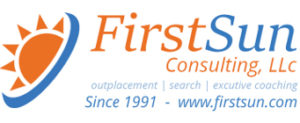#Leadership : 6 Keys to Employee Engagement During Times of Distraction…Gallup concluded that 71% of all Employees are either “Not engaged” or “Actively Disengaged.” In Simple Terms, Most Workers are Producing Far Less than They were Capable of Producing.
The problem of disengagement can become even more pronounced during the summer months or any time there is an economic slowdown. Employee attention tends to wander off to those “those lazy, hazy, crazy days of summer” rather than their work responsibilities
So what can you do to keep your employees engaged, their morale high and performance at its peak during times of distraction?
1. Recognize disengagement.
You can’t fix it if you don’t even know it exists. Fortunately, it’s visible. You see it in their eyes.
As Eric Allenbaugh writes in HR Magazine, there are two eye patterns that indicate disengagement.
There are the glazed eyes. As one 42-year-old manager said, “It stopped being fun here 16 years ago.” His glazed eyes and numb spirit said it all.
There are the beady eyes. A bright, yet disenchanted three-year employee said, “This place sucks, and I can hardly wait to get out of here.” Her beady eyes communicated a strong message of discontent.
I would add a third: distracted eyes. By simply looking at someone, you can tell if they’re mentally present or somewhere else. This is especially common during the summer or when business is slow.
Like this Article ? Share It ! You now can easily enjoy/follow/share Today our Award Winning Articles/Blogs with Now Over 2.5 Million Growing Participates Worldwide in our various Social Media formats below:
FSC LinkedIn Network: (Over 15K+ Members & Growing !) www.linkedin.com/in/frankfsc/en
Facebook: (over 12K) http://www.facebook.com/pages/First-Sun-Consulting-LLC-Outplacement-Services/213542315355343?sk=wall
- Google+: (over 800K)https://plus.google.com/115673713231115398101/posts?hl=en
- Twitter: Follow us @ firstsunllc
educate/collaborate/network….Look forward to your Participation !
Continue of article:
2. Consider the high cost of disengagement.
When a company pays an employee $30 an hour (or any amount of money) to perform a task, that company is entitled to $30 of productivity each hour in return. If the employees give anything less, they are — in effect — stealing from the company.
You can’t allow that to happen. It’s too expensive. It destroys the employees’ self-esteem, because no one can feel good about him or herself doing just enough to get by.
3. Make sure you are not a part of the problem.
I often ask my audience members how many of them ever came across a job candidate who didn’t want to be there, who disliked the company, its products and its customers and then thought to themselves, “That’s just the kind of employee I want” and went ahead and hired that individual. No one raises their hands.
So I ask them, “If no one ever hired a person like that, then why do companies have so many of them?” It’s because something happened to those employees during the course of their employment that turned them off.
According to Terri Kabachnick, in her book I Quit, But Forgot to Tell You, some of the most common causes of disengagement are a lack of information, lack of job purpose and lack of respect. To re-engage your people or prevent disengagement during your slowdown periods in the business, you must …
Related: The 12 Steps to Happiness That You Create (Infographic)
4. Keep them fully informed.
In one Chamber of Commerce study, 50,000 employees from all types of industries were asked to rank the 10 factors that had the biggest impact on their morale and motivation. Not surprisingly, the employees listed “being in on things” or “being fully informed” as the second strongest morale-building, motivating factor in the workplace.
After studying the communication patterns in dozens of organizations, Tamotsu Shibutani concluded, “You had better keep your people informed, or they’ll make it up, and it won’t be flattering.”
If you want an engaged workforce, you’ve got to communicate, communicate and then communicate some more.
5. Instill a sense of job purpose.
It’s almost impossible for employees to spend five, 10 or 20 years on a job and feel good about themselves if they think their jobs are a colossal waste of time. Employees need to know more than what a job entails, and employees need to know more than how to do a job. They also need to know why they’re doing a job.
A part of leadership is making sure that your people come in every day feeling like they are working on the most important thing. This is especially important when your people may be thinking more about some outdoor summer activities than their jobs.
To build an “engaged” culture where you engage the disengaged, you’ve got to tell people that their work matters. You’ve got to show people that their jobs have a purpose that only they can fulfill.
6. Show respect.
You may think this strategy only applies to the younger generations in the workplace. After all, we keep hearing about how needy the younger generations are — asking for more recognition, more challenges, more autonomy, more communication and more rewards. But a baby boomer in his 60s put it this way in one of my workshops: “We want the same things. We just felt we couldn’t ask.”
When your younger workers badger you for more respect and recognition, just remember all your employees crave the same thing. Their communication methods may differ, but their needs don’t. Employees want to be regarded first and foremost as people who are respected.
That’s why most of an employee’s productivity is directly attributable to his or her manager. If an employee feels like he or she is nothing more than a number filling a time slot for a manager, the employee is not going to be fully engaged.
To show your respect, treat each employee as an individual. Get to know each person’s strengths and weaknesses and likes and dislikes. Call each person by his or her name.
Certainly, good weather, summertime activities and an economic slowdown can distract your employees. It may even contribute to their lack of engagement. But with these six tips, you can keep your people fully engaged, for their own good as well as the company’s.
Entrepreneur.com | August 31, 2015 | Alan Zimmerman












